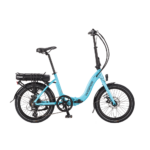Gilbert and Sullivan wrote
I`m a mine of information on all matters mathematical.
I understand equations, both the simple and quadratical.
I`ve information vegetable , animal, and mineral.
I am the very model of a modern major general.
Well, I am looking for someone with similar abilities. My question is, is there a way to compare the retarding effect of a headwind , on a flat road, with the retarding effect of a gradient. So could we say for example that a 10MPH headwind is equivalent to a one in thirty gradient, or whatever gradient it turns out to be?
I`m a mine of information on all matters mathematical.
I understand equations, both the simple and quadratical.
I`ve information vegetable , animal, and mineral.
I am the very model of a modern major general.
Well, I am looking for someone with similar abilities. My question is, is there a way to compare the retarding effect of a headwind , on a flat road, with the retarding effect of a gradient. So could we say for example that a 10MPH headwind is equivalent to a one in thirty gradient, or whatever gradient it turns out to be?








